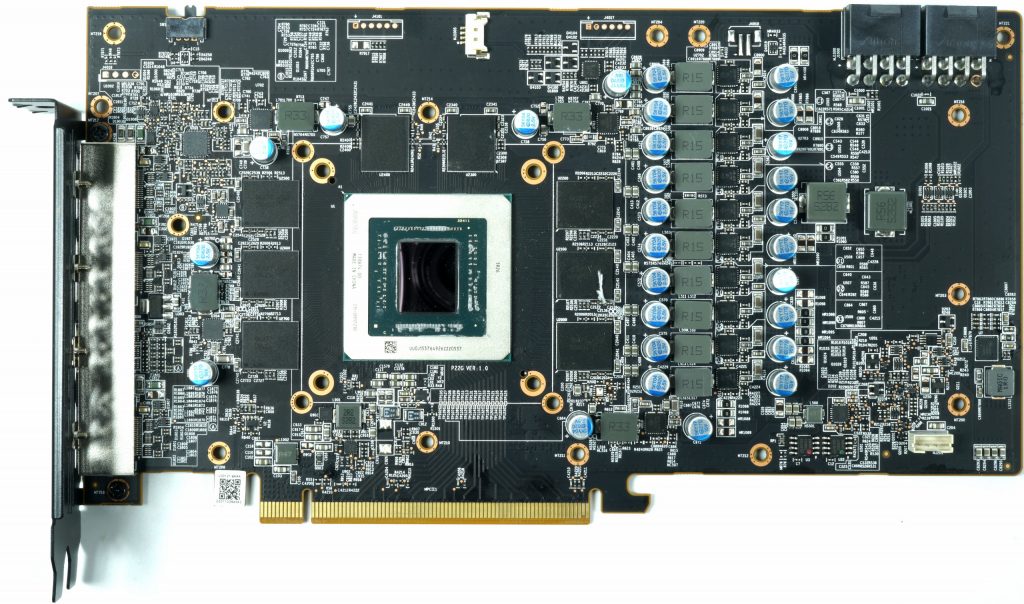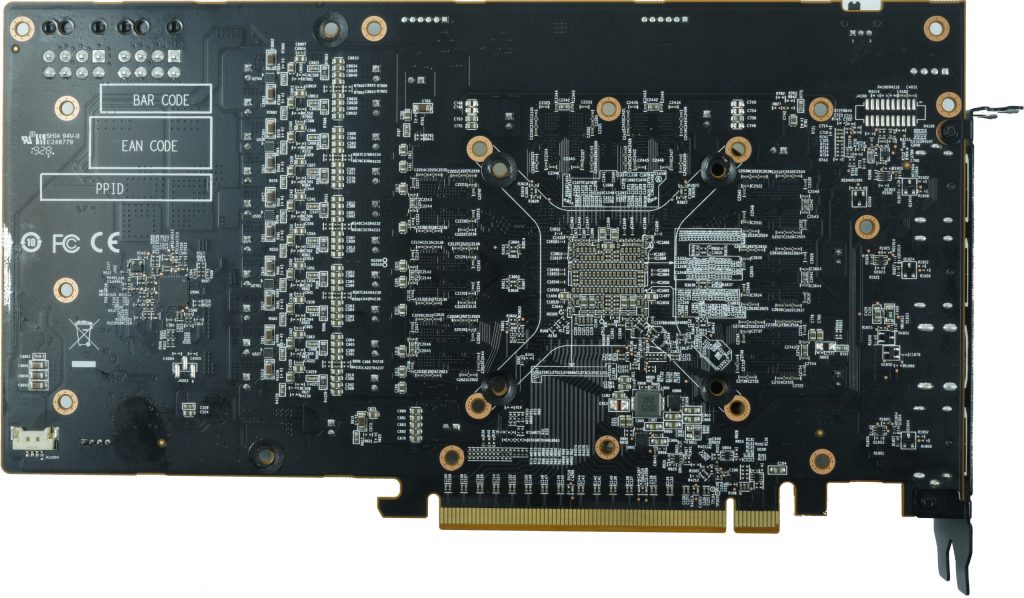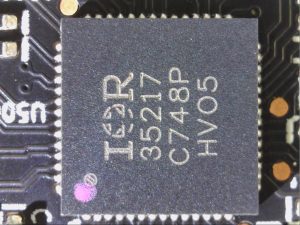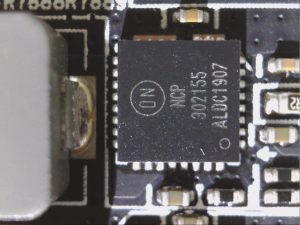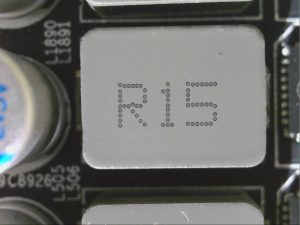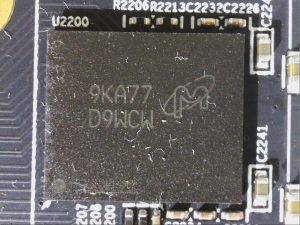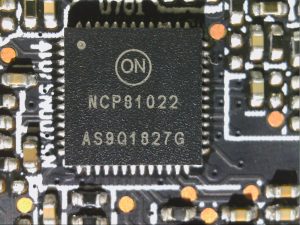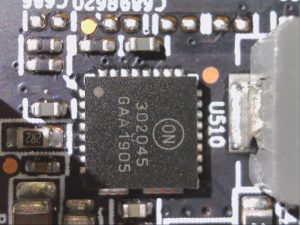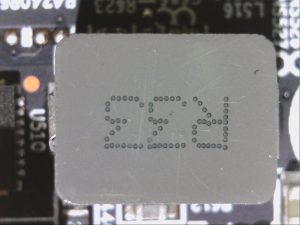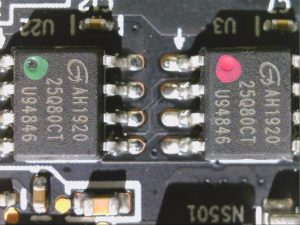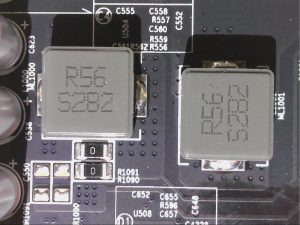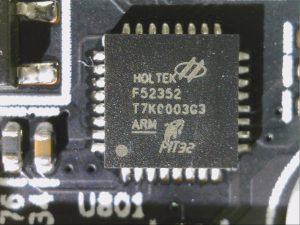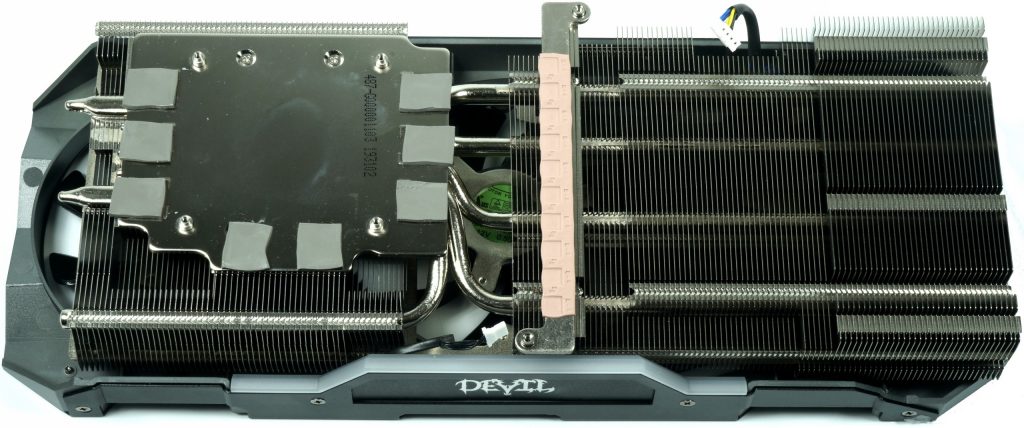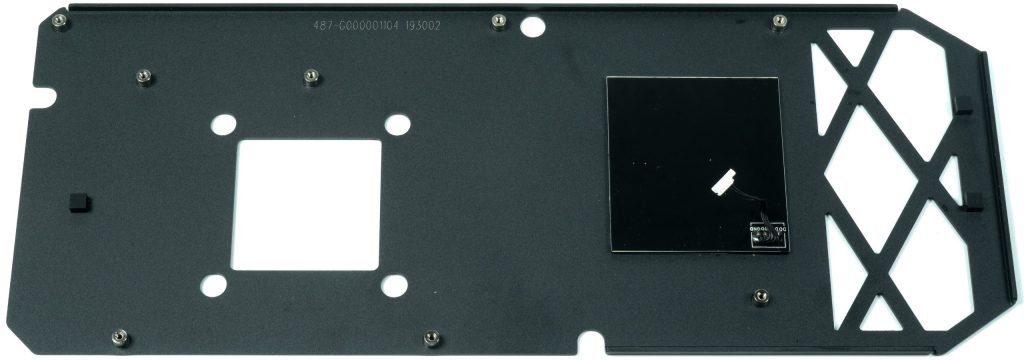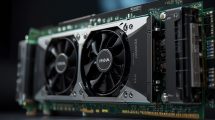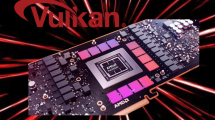Board layout and components
Powercolor, like AMD, uses a 7+2 phase design for the Red Devil. If you now count ten MOSFETS for the GPU, you are right in principle, but there are only 7 real phases, of which 3 phases drive 2 voltage regulator circuits in parallel, so that you get 10 voltage regulator circuits (VDDC) at the end. The well-known IR 35217 from International Rectifier controls the 10 NCP 302155 from ON Semiconductor, which are rather inexpensive dual MOSFETs with an integrated gate driver and can therefore also be operated in parallel on this PWM controller.
For the two phases for the memory (MVDD) Powercolor (like others) relies on an NCP 81022, a digital 2-phase voltage regulator, which drives a slightly smaller NCP 302045 (both from ON Semiconductor), which is also a dual MOSFET, combining high and low side, as well as the gate driver in one package. This MOSFET, which looks like a Smart Power Stage, is also used in the voltage regulators for the SoC and VDDCI.
Powercolor uses a short PCB with very few active components on the back. A second 8-pin connector implies a high overclocking potential, which should be more apparent than actual. One of the VDDC phases for the GPU is fed from the motherboard slot (PEG), the rest via the external PCIe connectors.
Die nachfolgende Tabelle enthält noch einmal die wichtigsten Komponenten:
Cooler
The upper cover carries the three fan modules, each with 9 rotor blades and 8.5 cm diameter (opening 9 cm). The two-part fin cooler with vertical fins underneath receives the waste heat from the nickel-plated heat sink via a total of four 6 mm and one 8 mm heat pipes. These nickel-plated heatpipes are made of copper composite material and extend almost completely over the entire underside of the radiator, except for one of the heatpipes.
Powercolor cools the memory modules via a common heat sink with the GPU and thus also directly via the cooler. For the thermal transition, thicker thermal pads are used, which fulfil their purpose quite well.
The backplate does not absorb any waste heat and is not integrated in the cooling system, but only of a purely optical nature. This also includes the backlit Red Devil logo.
| Kühlsystem im Überblick | |
|---|---|
| Type of cooler: | Air Cooler |
| Heatsink: | Copper, nickel-plated |
| Kühlfinnen: | Aluminium, vertically orientated narrow fins |
| Heatpipes | 4x 6-mm Heatpipes, 1x 8-mm Heatpipe |
| VRM-Kühlung: | Main cooler, integrated Heatsink |
| RAM-Kühlung | GPU Heatsink |
| Lüfter: | 3x 8,5 cm fans, 9 rotor blades Fan-Stop |
| Backplate | Aluminium No cooling function, LED Logo |
- 1 - Introduction and Technical Data
- 2 - Tear Down: Board and Cooler
- 3 - Benchmarks 1920 x 1080 Pixels
- 4 - Benchmarks 2560 x 1440 Pixels
- 5 - Benchmarks 3840 x 2160 Pixels
- 6 - Power Consumption in Detail
- 7 - Temperature, Clock Rate and Infrared
- 8 - Fan Speed and Noise Emission
- 9 - Conclusion and Bottom Line















